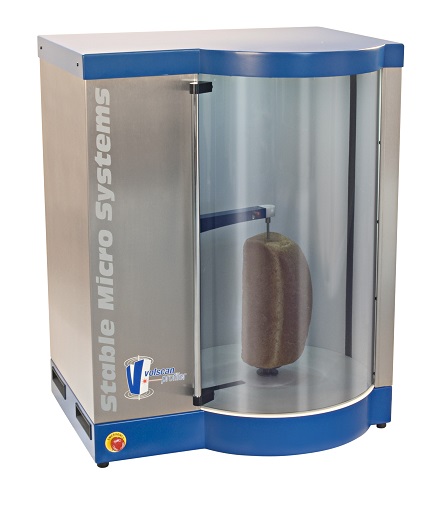Shopping Cart
0 item(s) - Price: EnquireTexture Analysis
The quantification of physical properties can be a challenging thing to define and measure accurately. In the Food Industry, texture and feel can be as important as taste.
.jpg)
Texture is an important attribute of products in that it affects processing and handling, influences habits, and affects shelf-life and consumer acceptance.
Texture analysis is the mechanical testing of food, cosmetics, pharmaceuticals, adhesives and other consumer products in order to measure their physical properties. Because of its adaptability, texture analysis has become commonplace in many industries to measure a specific or range of characteristics or properties relating to the way a material behaves, breaks, flows, sticks, bends etc.
Major manufacturers routinely apply texture analysis techniques both in new product development and as part of quality control in all stages of manufacture, carrying out a wide range of measurements to analyse raw materials or excipients, semi-finished goods, packaging and finished products.
It is a cost-effective method to determine the effects of raw material or excipient quality or the adjustment of formulation or processing variables on end product acceptability – whether this is to measure the ‘mouth feel’ properties of food, the flow properties of creams and pastes, the break or bend of a product or the tackiness of adhesives.
Where problematic textural issues occur during storage or transportation, texture analysis can provide a useful assessment. It may also prove to be an effective means of comparison with competitive products, or where claims substantiation is necessary to take a technical pro-active stance in your market. It will certainly provide an indispensable tool when you need to quantify the texture or overall physical properties of your ‘gold standard’ product for future comparison in manufacture – the key to maintaining consistent textural quality!
Stable Micro Systems offers the most universal Texture Analysers available today – the TA.XTplus and TA.HDplus ‘World Standard’ instruments – to completely satisfy the increasing demands for accurate, repeatable and quantifiable textural information.
They assess textural properties by capturing force, distance and time data at high speed – data which is then displayed graphically by Exponent software.
Our range of Texture Analysers use different probes and fixtures according to the required test method. Each probe or fixture is designed for a specific group of applications, and can be quickly and easily attached. Samples are either placed on the base of the instrument or on the lower fixture, or held between two fixtures. In a simple test, the arm of the texture analyser containing the loadcell moves down to penetrate or compress the product, and then returns to its initial position whilst measuring forces in both directions.
Excellent for use in research and quality control where product consistency is key and where the effects of small changes in ingredients can be quickly and accurately compared and measured alongside existing products.
For a demonstration on how the Texture Analyser works, or for information regarding the Texture Analyser please contact us here to get started!
Loaf volume is the principal component of, and is of paramount importance to, bread quality evaluation. This is a vital aspect of the consumer's perception of value, because in bread and other leavened goods, higher volume - for the same weight - is invariably associated with more aerated crumb and superior texture.
For a baker or bread manufacturer, each batch of flour has to be evaluated by test baking to ensure that bread is made to a uniformly high quality. One component of this quality control is measurement of the volume of the bread, which can give information relating to the density of the bread crumb and the strength of the gluten in the flour. Lack of volume generally indicates the use of a weak flour, or one low in enzyme activity. A very strong flour may also produce a loaf of small volume, which would indicate the need for a longer fermentation period during which the gluten would become ripened and so more extensible.
This volume information can then be used to modify the dough mix used in bread production, in order to produce bread of the appropriate quality.
This procedure is important, not only for the inherent qualities of the bread, but to ensure that the selected dough-piece weight produces a loaf of the correct size for the standard tins used in the baking process. The baked product must also be capable of being handled by automatic slicing machines and packed into standard sized bags.
It is therefore important to have a precise and rapid method for the measurement of the volume of bread loaves, enabling control and monitoring of bread-making conditions and manufacturing operations.

To learn more about Stable Micro Systems visit their website or click here to read their latest news
